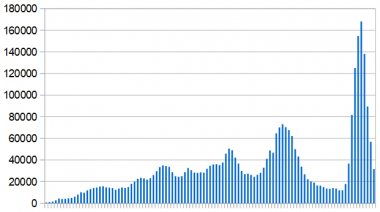I have been puzzling over the latest Global Gender Gap report from the World Economic Forum (the organisation behind the annual Davos gathering). As might be expected, Arab states are all in the bottom third of the 142 countries surveyed, with Yemen at the very bottom:
113 Kuwait
115 United Arab Emirates
116 Qatar
123 Tunisia
124 Bahrain
126 Algeria
128 Oman
129 Egypt
130 Saudi Arabia
131 Mauritania
133 Morocco
134 Jordan
135 Lebanon
139 Syria
142 Yemen
But look closer, and these rankings are rather odd. Why, for example, is the gender gap in Saudi Arabia (according to the survey) narrower than in Lebanon? The report does say that the index is meant to show "proximity to gender equality rather than to women’s empowerment" but I suspect its findings result from using a mass of complex data without applying the "common sense test" to check that they are credible.
In Saudi Arabia there is more institutionalised discrimination against women than in any other country, and perhaps this is part of the explanation. Because some of the discriminatory practices – such as preventing women from driving – are unique to Saudi Arabia, the WEF hasn't included them in its "indicators".
I'd be interested to hear readers' views on this.
Posted by Brian Whitaker
Wednesday, 29 October 2014

 RSS Feed
RSS Feed

